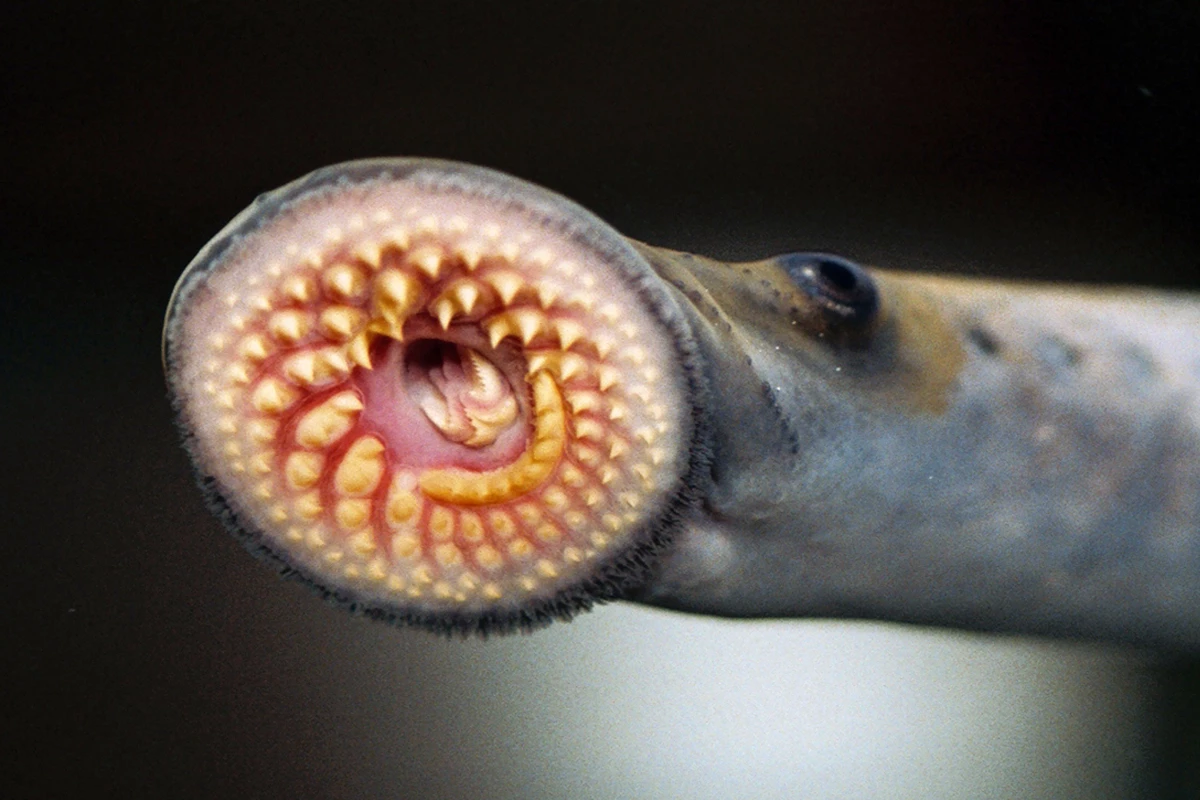The formation of a part of the human brain responsible for regulating vital functions is triggered in an identical way in the sea lamprey, a new study has found. The discovery suggests that we’re related to these primitive creatures.
Evolution unifies the field of biology, drawing together subject matter from diverse areas like genetics, ecology, and physiology. The information we obtain can help solve real-world problems that have a biological basis.
A new study by a team at the Stowers Institute for Medical Research in Missouri, US, has made a startling discovery about brain development that means humans are cousins to a 500-million-year-old jawless sea creature with a toothed suction cup for a mouth.
“There was a split at the origin of vertebrates between jawless and jawed around 500 million years ago,” said Alice Bedois, lead author of the study. “We wanted to understand how the vertebrate brain evolved and if there was something unique to jawed vertebrates that was lacking in their jawless relatives.”
The creature in question is the sea lamprey, a parasitic fish native to the northern and western Atlantic Ocean. But unlike ‘bony’ fishes like trout, cod, and herring, lampreys don’t have scales, fins, or gill covers. They also have a suction-cup mouth ringed with sharp teeth they use to clamp onto other fish, using their rough tongue to wear away the fish’s flesh so they can feast on its blood and body fluids.
The researchers had previously ascertained that the genes regulating the structure of the sea lamprey’s hindbrain are identical to those in jawed vertebrates, including humans. The hindbrain is a complex coordination center that regulates vital functions like breathing and heart rate and, during embryonic development, is the site from which many face and head structures are formed.
However, these genes are part of an interconnected network that needs a molecular ‘cue’ to start and guide the process of hindbrain building. The researchers searched for that cue in sea lampreys and found it: retinoic acid, commonly known as vitamin A.
“We found that not only are the same genes but also the same cue is involved in sea lamprey hindbrain development, suggesting this process is ancestral to all vertebrates,” Bedois said.
The researchers already knew that retinoic acid cued the genetic circuitry needed for hindbrain formation in complex species but were surprised to find it was the same in the primitive suction-faced sea creature. The finding proved that sea lampreys are much more closely related to humans than was anticipated.
“People thought that because sea lampreys lack a jaw, their hindbrain was not formed like other vertebrates,” said Robb Krumlauf, the study’s corresponding author. “We have shown that this basic part of the brain is built in exactly the same way as mice and even humans.”
Knowing how the cues provided by retinoic acid are used to form normal head and facial structures in vertebrates is important for understanding how this process can go wrong in disease states, the researchers say. They talk about the implications of their findings in the video below.
It appears that the research may have raised more questions that require answers.
“We all derived from a common ancestor,” said Bedois. “Sea lampreys have provided an additional clue. Now, we need to look even further back in evolutionary time to discover when the gene circuitry governing hindbrain formation first evolved.”
The study was published in the journal Nature Communications.





